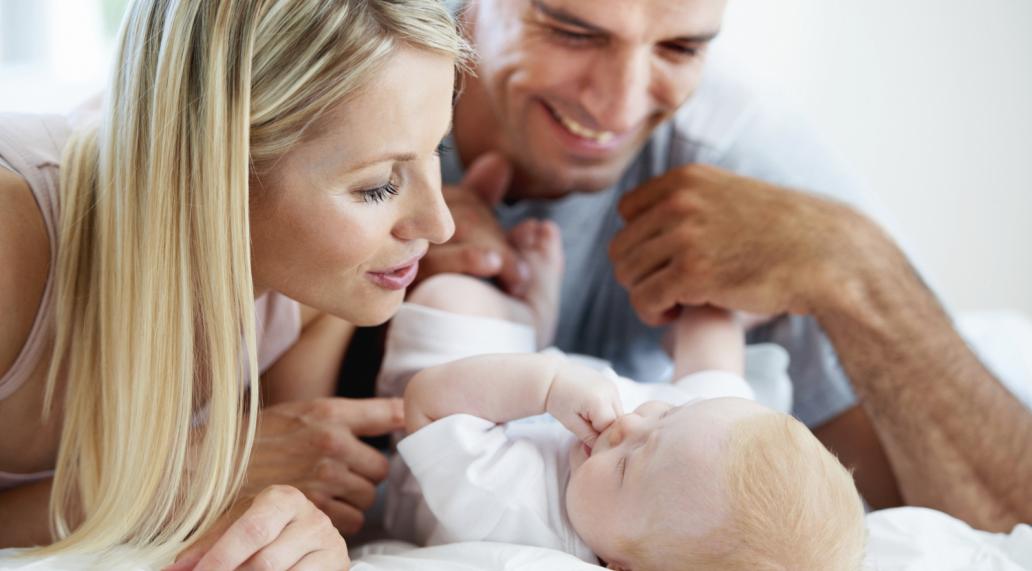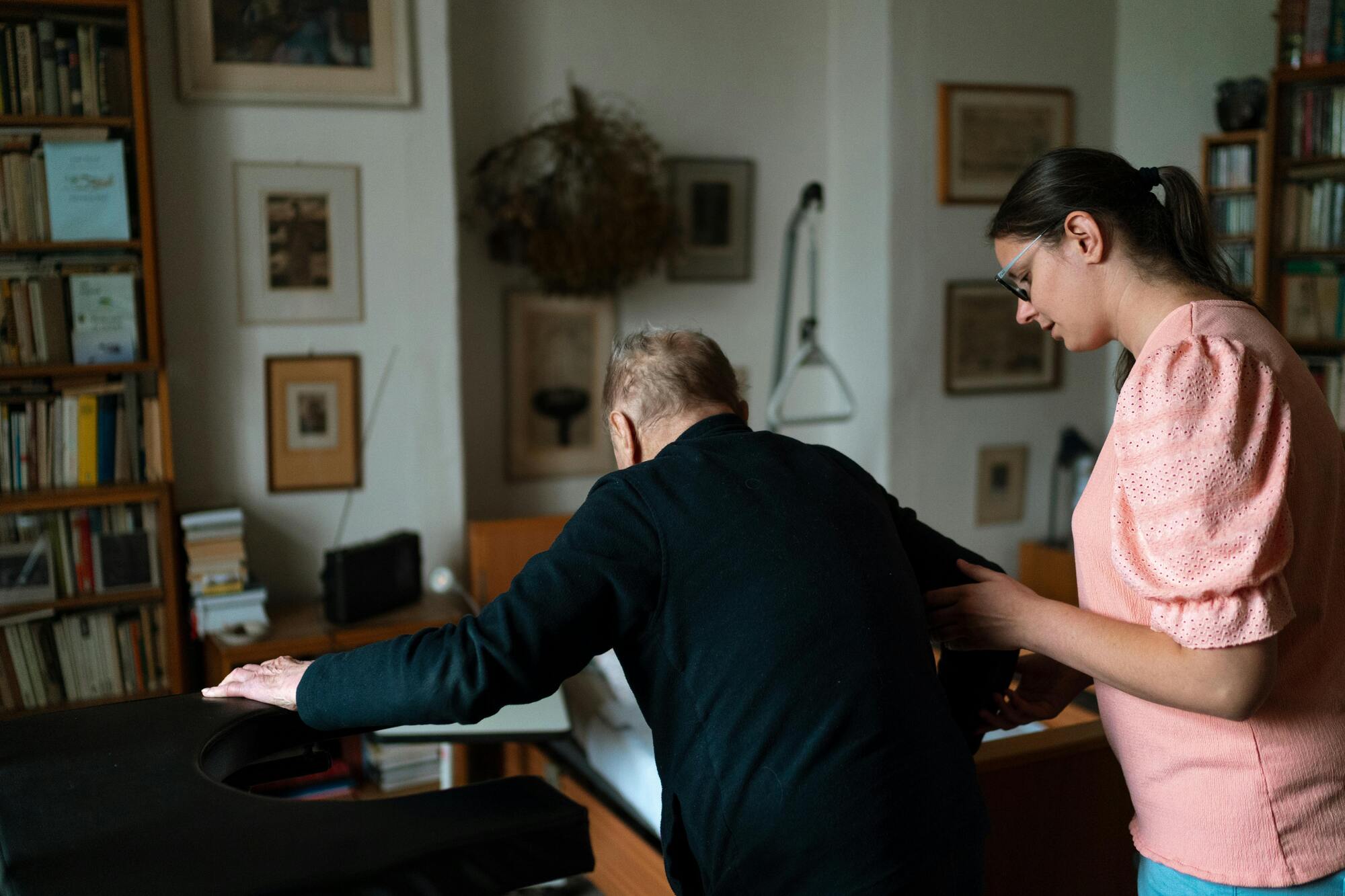
On January 1st, the amendment to the law on parental allowance and parental leave came into effect. In particular, the newly introduced Parental Allowance Plus will offer young parents more flexibility in balancing work and family life during the first months of a child's life. famPLUS explains the new possibilities using two examples.
Andrea Weiss is four months pregnant. She and her husband Alexander are both employees with middle incomes. Andrea's friend, the freelance graphic designer Clara Michels, is also having a baby with her boyfriend Peter in July. All four are considering their application for parental allowance and have quite different needs in this regard.
A parent who looks after their child themselves and therefore cannot earn money currently receives parental allowance for the first twelve months after the birth. There is an additional two months of parental allowance if the partner also does not bring home any income – the so-called partner months.
This is how parental allowance is calculated
Andrea Weiß plans to stay at home for the first few months after the birth of her child. Her husband Benedikt will continue working. As an employee on parental leave, Andrea receives 67 percent of her net income as parental allowance. For incomes that average under 1,000 euros per month after taxes and social security contributions, the percentage increases to up to 100 percent. A minimum of 300 euros per month is paid out, even if the parent staying home had no prior income. Those who earn more than 1,200 euros will face reductions. Then, the calculation rate decreases by 0.1 percentage points per 20 euros, down to a minimum of 65 percent. At 2,770 euros, the net income is capped. Therefore, there is no more than 1,800 euros in parental allowance. Top earners with an annual income over 250,000 euros no longer receive any parental allowance.
For example, after deducting social security and taxes, Andrea has 1,380 euros available per month. Therefore, she receives parental allowance amounting to 66.1 percent of her salary.
Only for births after July 1, 2015: the new Parental Allowance Plus
In addition to the basic parental allowance, there is a new option for parents whose children are born after the cut-off date of July 1, 2015: the Parental Allowance Plus. It extends the period during which the support is paid to up to 28 months. However, the total amount does not increase. This is because the Parental Allowance Plus is only half as much.
The self-employed graphic designer Clara Michels is deeply engaged with Elterngeld Plus because she heard that this way she could receive money from the parental allowance office over a significantly longer period.
The assessment basis for the self-employed is the profit that was generated in the last tax assessment period, usually the calendar year before the birth. For Clara, the last year went well. She reported a profit of 27,600 euros in the last income tax return, which now serves as the calculation basis.
She makes the following calculation:
Clara's average monthly income before the birth: 2,300 euros
Clara Calculation Rate: 65 percent
______________________________________________________________________
Parental Allowance: 1,495 Euros
Parental Allowance Plus: 747.50 euros
Unlike Andrea, freelancer Clara wants to start working and earning again as soon as possible. However, if she still wants to receive parental allowance, she may not work more than 30 hours per week on average.
The good news: the options of the new Parental Allowance Plus can be easily combined with those of the basic parental allowance. She can, for example, stay at home with the child for the first four months and apply for the basic parental allowance. Instead of the next eight months of basic parental allowance, she can then choose 16 months of Parental Allowance Plus.
In the case of part-time work, additional earnings are taken into account.
If Clara works up to 30 hours part-time again, her additional earnings will be credited to the basic parental allowance according to the difference principle. For this purpose, the parental allowance office calculates the difference between the income before the birth and the income during the reference period. Particularly important for self-employed individuals like Clara: The average income during the reference period is decisive. The parental allowance office then applies the calculation rate to the difference amount, which is derived from the income before the birth.
Clara's average net income before birth: 2,300 euros
Clara's average additional income per month during the reference period: 600 euros
___________________________________________________________________
Difference amount: 1,700 euros
Clara's assessment rate: 65 percent
__________________________________________________________________
Parental allowance for part-time work (12 months): 1,105 euros
Different for Parental Allowance Plus: Even if Clara works part-time, it remains half as high as the parental allowance without income after the birth.
New is also the possibility that both parents can work part-time simultaneously for up to four months under the partner bonus and receive Elterngeld Plus in addition to their part-time income during this period. Prerequisite: both work no more than 30 and no less than 25 hours a week.
Andreas' net income before birth: 1,380 euros
Andreas assessment rate: 66.1 percent
__________________________________________________________________
Parental Allowance Plus (912.18 euros/2): 456.09 euros
Andreas' net income in part-time (25 hours/week): 700 euros
____________________________________________________________________
Total monthly income: 1,156.09 euros
Benedict's average net income before birth: 2,700 euros
Benedict's Assessment Rate: 65 Percent
__________________________________________________________________
Parental Allowance Plus (1,755 Euro/2): 877.50 Euro
Benedict's net income in part-time (25 hours/week): 1,300 euros
___________________________________________________________________
Total monthly income: 2,177.50 euros
Basic Parental Allowance and Parental Allowance Plus can be combined
Andrea and her husband Benedikt are considering how exactly to combine the different parental allowance options. Andrea would like to return to work no later than after 10 months of basic parental allowance. Initially, for only 25 hours. Benedikt would also reduce his working hours to 25 hours in the following four months and take advantage of the partner bonus.
The couple doesn't have to make a final decision just yet. Although Andrea and Benedikt must specify in their application for parental allowance which months they wish to receive it or Parental Allowance Plus from the start, they can change their choice until the end of the benefit period. This reassures Andrea a lot: If she finds a good childcare solution, she can well imagine returning to her old job earlier. Attention: Once the higher parental allowance is paid out,
can no longer be retroactively changed to Parental Allowance Plus.
Extra tip:
The Federal Ministry for Family Affairs has comprehensive Information material on Parental Allowance Plus developed and posted online. Among other things, there is a checklist with the essential information about Parental Allowance Plus. It also refers to the necessary forms for the application for Parental Allowance Plus.
The most important things summarized
- If you take care of your child at home after birth and do not earn any money during this time, you will receive between 65 and 67 percent of your net income as parental allowance.
- For children with a due date after July 1, 2015, parents can alternatively apply for Parental Allowance Plus.
- Parental Allowance Plus is only half as much as the Parental Allowance – but it is paid out for twice as long, up to 24 months.
- Both with parental allowance and parental allowance Plus, beneficiaries can earn additional income – however, only the difference from the income before birth will then be compensated.
With the new Parental Allowance Plus, the partner months can be extended from two to four months. Prerequisite: both parents work between 25 and 30 hours weekly.
- In the parental allowance application, it must be specified for which months parental allowance or parental allowance Plus is being applied for. Decisions that have been made can be changed until the end of the benefit period.
famPLUS - Together for your personal PLUS!


